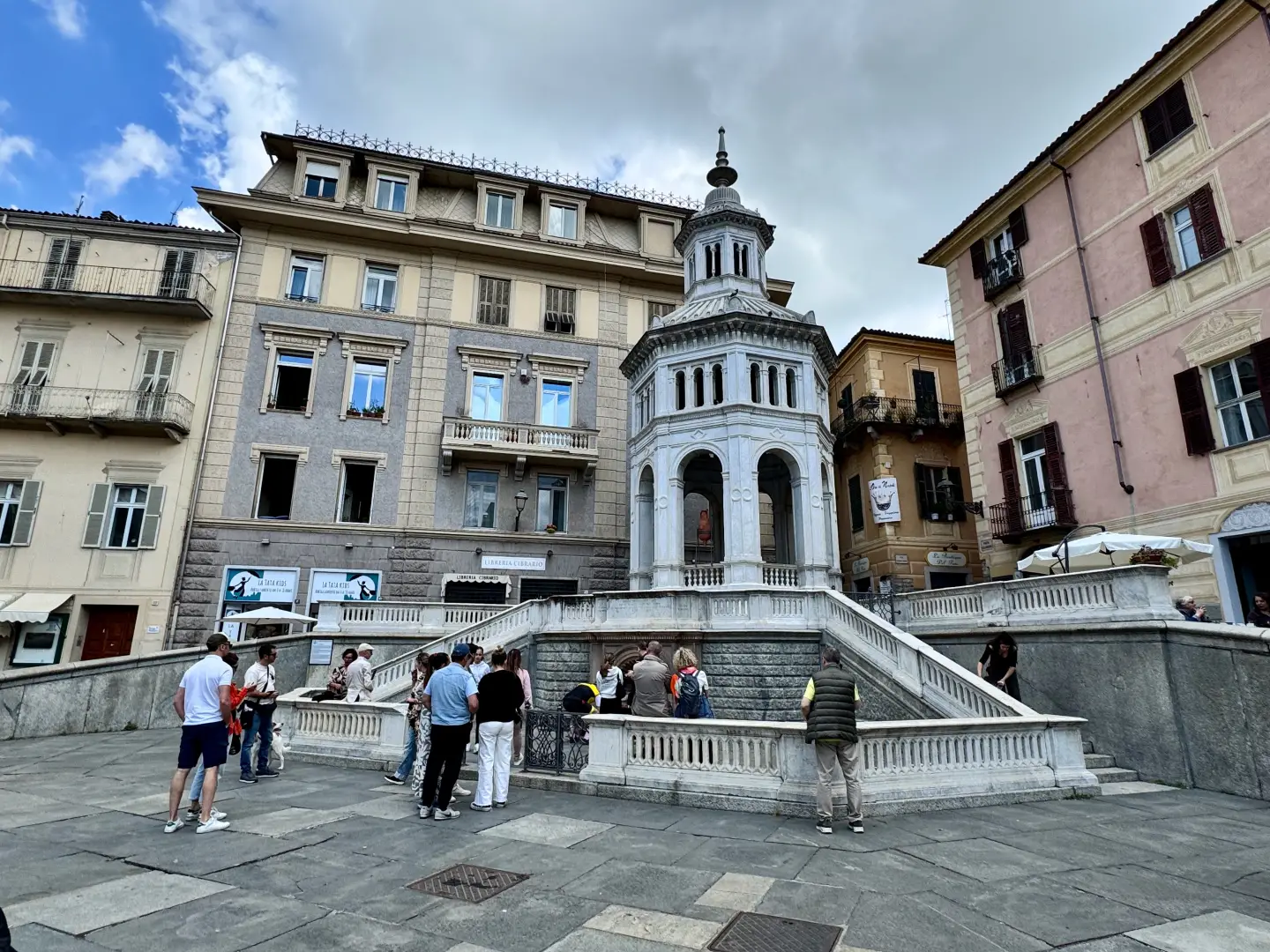Acqui Terme

Access
The city is well connected: the railway station is on the Alessandria-Savona line, while the motorway (Ovada exit) is 25 km away. The nearest airports are Genova (70 km) and Milan Linate (100 km).
.Introduction
Located on the gentle hills of the Alto Monferrato, along the banks of the Bormida river, Acqui Terme is one of the pearls of southern Piedmont. Known since antiquity for its thermal waters that flow at impressive temperatures, this town of some 20,000 inhabitants combines millennial history, wellness and food and wine traditions. The iconic Bollente, a fountain in the historic centre from which water spurts out at 75°C, is its undisputed symbol. Founded as Aquae Statiellae in Roman times, Acqui Terme retains an elegant charm, with its architectural heritage ranging from Romanesque to Art Nouveau, nestled in a landscape of vineyards that produce some of the area's most renowned wines.
Description
The Acqui territory stretches between the Bormida valley and the foothills of the Ligurian Apennines, with an altitude ranging from 150 to 400 metres. In addition to the Bormida river, which draws suggestive bends, the landscape is characterised by hills covered with vineyards - the famous Dolcetto d'Acqui - and oak and chestnut forests. The hamlets of Moirano and Lussito retain their rural character, while the thermal area of Borgo Bagni houses modern establishments next to the ancient Roman baths.
Acqui's origins date back to the Ligurian Statielli, but it was with the Romans (2nd century B.C.) that it became an important thermal centre and road junction along the Via Aemilia Scauri. In the Middle Ages it was fought over by the Lombards, the Franks and the Marquises of Monferrato, while the golden age came with the Savoy family, when the Castle of the Paleologians was built (now housing the Archaeological Museum). Prominent figures include St. Guido, the town's patron saint, and the poet Giorgio Caproni, who spent part of his youth here.
The economy revolves around three pillars: spa tourism, with avant-garde facilities that exploit the sulphurous waters for rheumatological and respiratory treatments; enogastronomy, with excellent products such as the Brachetto d'Acqui DOCG and the tartufi from the surrounding hills; and the industry, particularly glassmaking and metalworking. Local handicrafts boast woodworking and the production of artistic ceramics.
Acquese culture is expressed in traditions such as the Fiera di San Guido (second Sunday in July), with historical processions and food and wine stands, and the Festa della Bollente (August), which celebrates the town's iconic fountain. The typical cuisine combines the flavours of Monferrato and Liguria: from tajarin al tartufo to bagna càuda and the famous amaretti di Acqui. Among the monuments not to be missed are the Romanesque cathedral (11th century), with its octagonal bell tower, and the Carlo Alberto Bridge, an elegant iron structure in the style of the Parisian footbridges.
For lovers of slow tourism, Acqui is the starting point for the Monferrato Wine Road, which connects wineries and historic villages, and for excursions to the Bormida Valley Nature Reserve. Thermal routes lead to the discovery of ancient springs, while the surroundings offer castles such as Melazzo and Roman archaeological sites. A curiosity? The legend of the 'Treasure of Aleramo', which is said to be hidden in the castle vaults.
Information
Area: 33.42km²
Altitude: 156m
Maximum elevation: 405m - Bric della Maddalena
Number of inhabitants: 18,975 as of 31.12.24
Name in dialect: Àich
Inhabitants' name: acquesi
Patron Saint: San Guido, celebrated on the second Sunday in July
Bordering municipalities: Strevi, Alice Bel Colle, Cavatore, Grognardo, Melazzo, Montabone, Ricaldone, Terzo, Visone
Website: www.comune.acquiterme.al.it
Collections
cover: Alessio Sbarbaro User_talk:Yoggysot - Own work, CC BY-SA 3.0, https://commons.wikimedia.org/w/index.php?curid=16375488